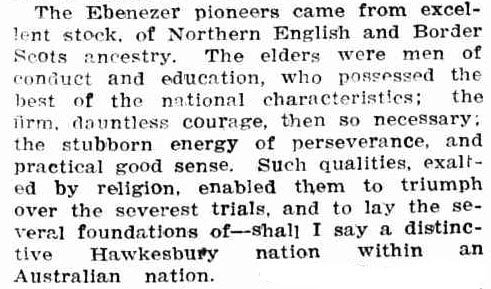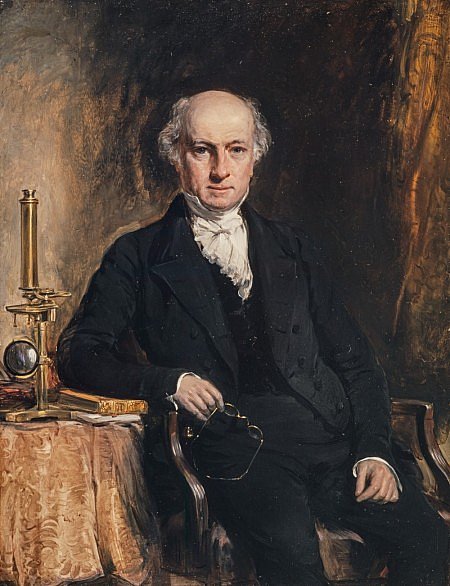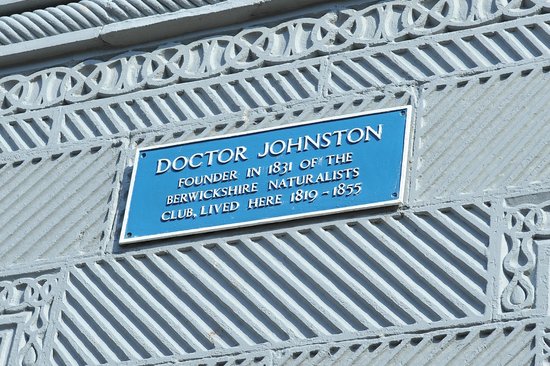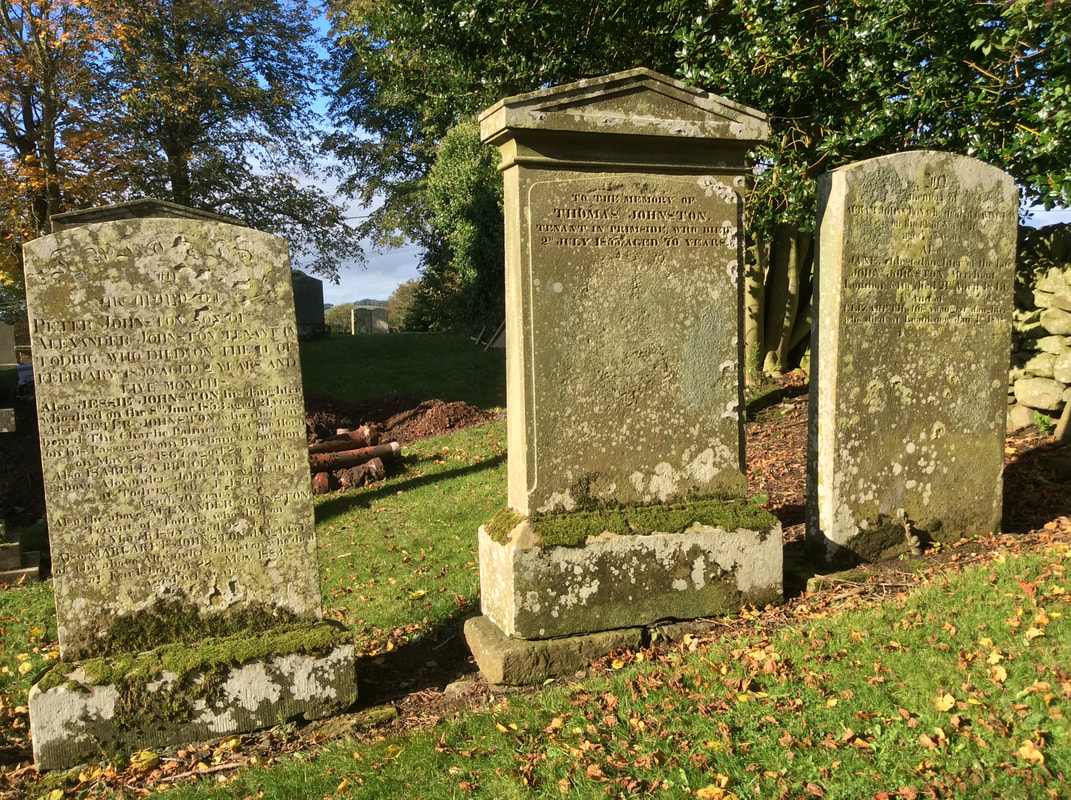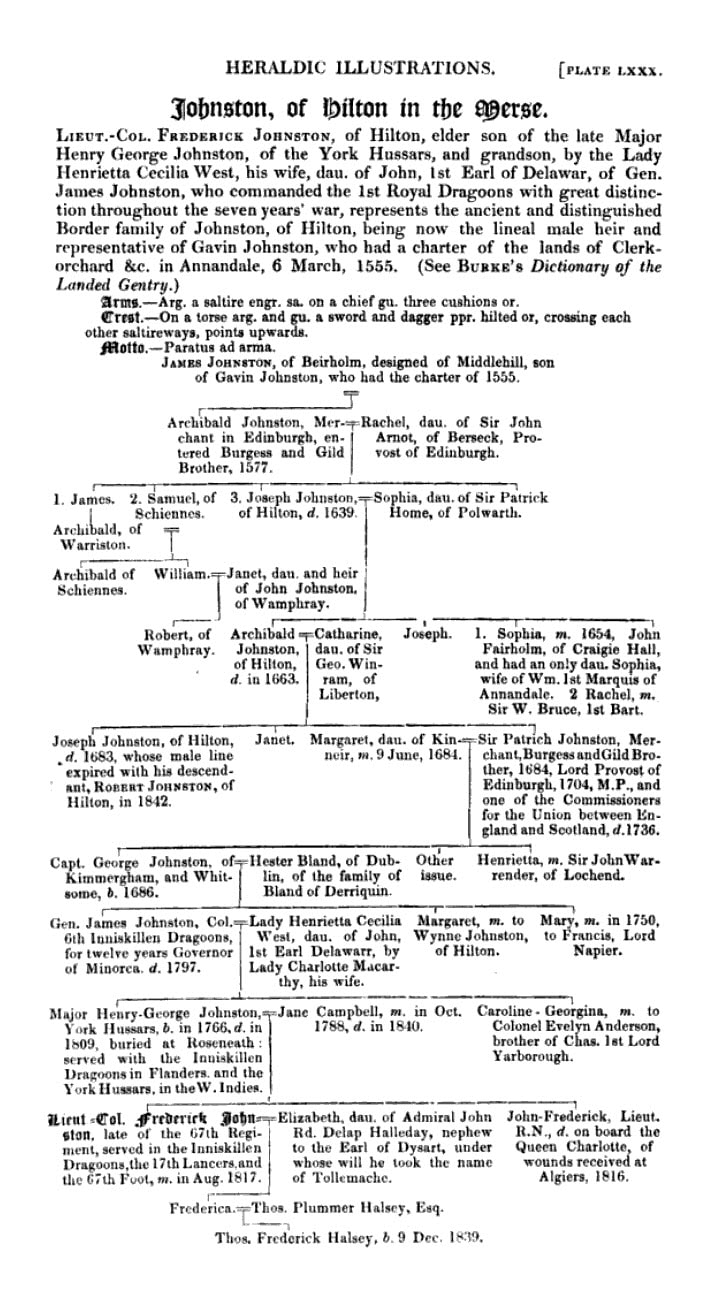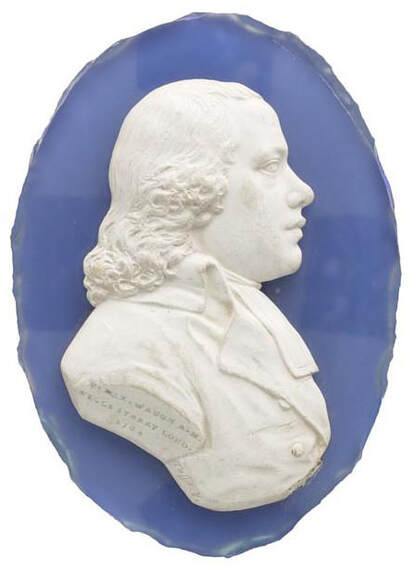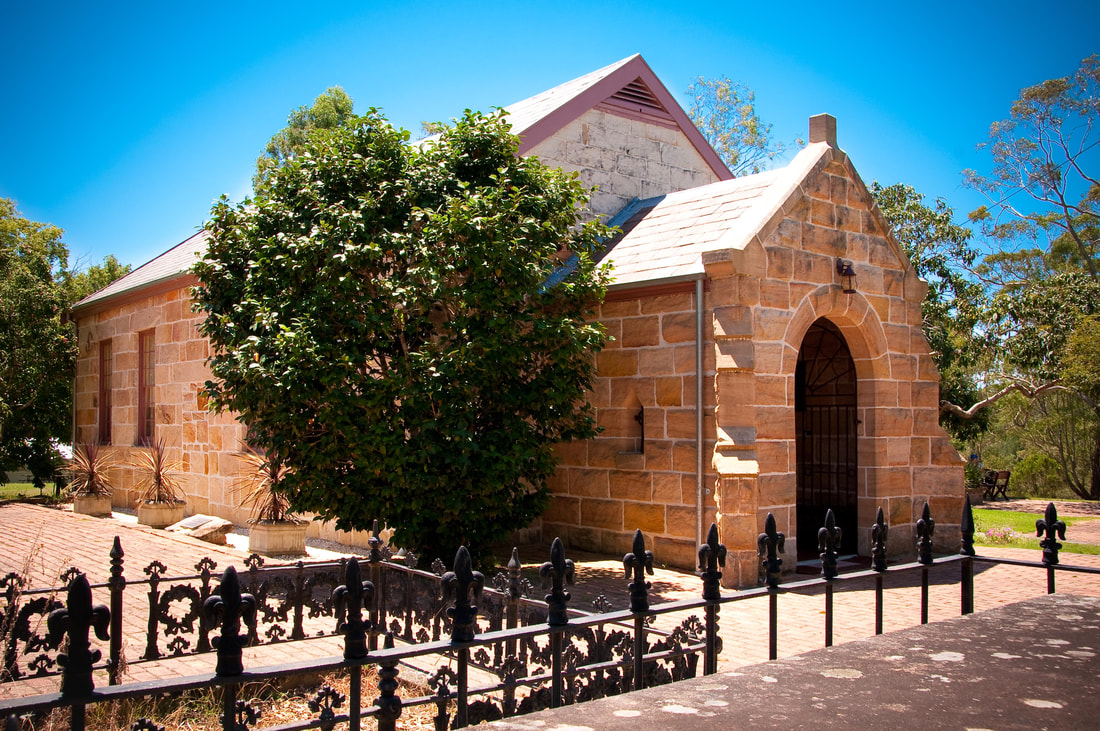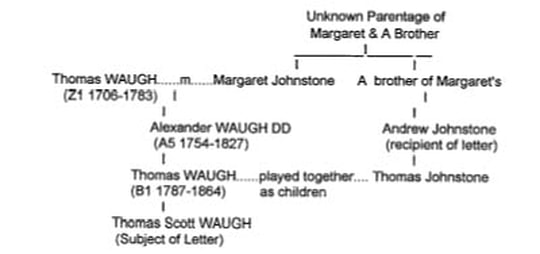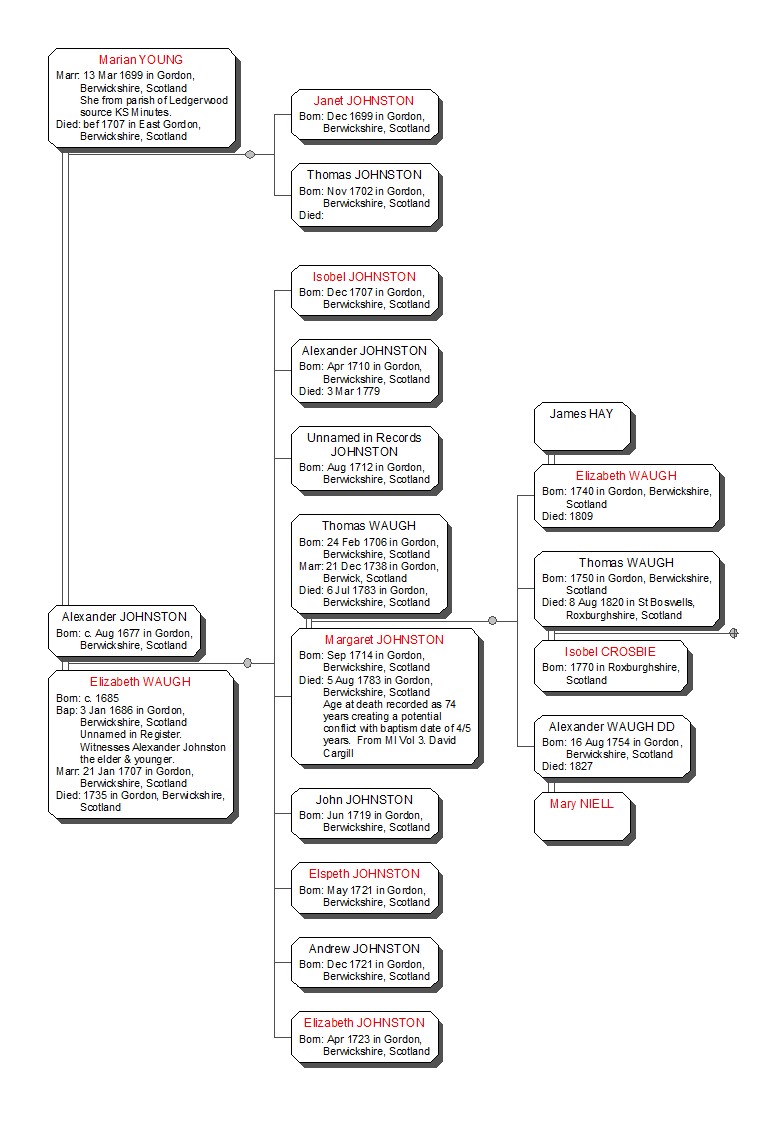|
When a case crosses my desk that also contains a significant element of local history it really piques my interest. When it concerns a family that skirts the perimeters of my own this interest is somewhat exacerbated. So, when approached to look into the Johnston family that formed part of a small group, mainly made up of folks from the Scottish Border Country and Northumberland, who after a period living in London, sailed to Australia in 1802 aboard the ship the ‘Coromandel’ I knew I was in for both an interesting and challenging journey. Particularly as this little party were followers of the Presbyterian Secession Church, so therefore ‘Dissenters’ or ‘Nonconformists’ in both Scotland and England making them more difficult to trace. Furthermore, the surname Johnston just happens to have ranked 6th in occurrence per 100,000 of the population in Berwickshire in 1841, so there was a lot of them about! There are several branches of Johnstons who touch the perimeter of my own family tree. In this particular case it is the Johnstons linked to the Waugh family that farmed at East Gordon for many generations. If you know or even suspect your family of Johnstons hailed from Gordon in the 18th century we would love to hear from you. Chances are that you, like my clients are faced with a black hole of information necessary to join the dots! It like a polo mint of family information but nothing to join them in the middle! Other Johnston Families of Berwickshire Back in July 2014 I recounted the sad affair of Johnston descendants in Ballarat during the gold rush, where 4 members of one family lost their lives. The last of which, it could be argued rather insensitively, met his end courtesy of a hangman’s knot. These were descendants of Peter Johnston and his wife Margaret Thomson through their son Lt Col James Johnston and his wife Matthew Jane Trotter. Amongst Peter and Margaret’s numerous other children was Dr George Johnston MD of Berwick upon Tweed. For anyone familiar with the history of the town, Dr Johnston will be a well-known name, not least for being a founder member and the first president of the Berwickshire Naturalists Club and Mayor of the town no less than three times.
The Johnston family of Swinton and Simprim was closely linked to the Johnston family of Whitsome, which is the ‘branch line’ above the Youngs of New Ladykirk. Their joint family pedigree is outlined in just one table stone in Eccles Kirkyard, albeit with a misleading transcription of the inscription in Cargill’s book for the Border Parishes of Berwickshire: William Johnston, tenant in Ednam Mains 3.11.1699 50 yrs, spouse Betty Morton 26.1.1721 77 yrs also Janet Dickson 28.10.1737 43 yrs spouse to Patrick Johnston, tenant in Little Swinton who d. 29.1. 1732 69 yrs. Peter 30.6.1751 1 yr. Helen 1.5.1752 3 yrs. Thomas 1.3.1760 2 yrs. George 6.1.71 16 yrs children of William Johnston tenant in Simprim 12.5.1796 82 yrs. Margaret Fairbairn his spouse 14.3.1800 82 yrs. James 12.1.1788 son of Peter Johnston tenant in Simprim his son Matthew 14.3.1802 4 months above mentioned father late tenant in Ilderton 11.12.1803 51 yrs his 2 inf. Children James 12.4.1788 11 months. Matthew Trotter 5.11.1802 4 months. Margaret 13.9.1811 26 yrs. Margaret Thomson relict of Peter Johnston 18.1810 [sic] 78 yrs. James who d. 12.?.1788 1 yr. Peter Johnston of Ilderton’s 1st cousin, Patrick Johnston and his wife Margaret Johnston, farmed at Kimmerghame Mains with its links to the families of Hogarth and Clay. Their son George took the tenancy of West Newton before moving to Stichill where their own son also named George married into the Johnston family of Rumbleton Law, Gordon. Putting the Rumbleton Law family line to one side for the present it is another Johnston family of Gordon that is of particular interest to this current line of research, especially those with historic connections to the farm of East Gordon and its numerous inter-marriages with the Waugh family, historically of the same place. Johnston Family & the Coromandel Much has been written about the intrepid voyagers aboard the Coromandel in 1802, not least what has been written by R M Arndell in his book ‘Pioneers of Portland Head: Builders of Ebenezer Church and School, Early Settlers of the Hawkesbury and Hunter Rivers, and Squatters of the North-West New South Wales and Southern Queensland, including Family Genealogies.’ The general consensus would appear to be that there were between eight and ten original emigrant families. These included: 1. Zachariah Clarke, his daughter Ann. Zachariah Clarke died 5 December 1804. Ann Selby and Isabella Suddis [Perhaps not on this voyage] 2. Andrew Johnston and his wife Mary Beard Johnston and children, Thomas aged 10 years, William aged 8 years, John aged 5 years, Alexander aged 3 years and Abraham aged 8 months. 3. George Hall and his wife Mary and children, Elizabeth aged 9 years, George aged 7 years, William aged 5 years, John aged 6 months 4. John Johnston and wife Elizabeth Lewins Johnstone. Find out more about the John Johnston - Windsor and Richmond Gazette 2 April 1926 [This obituary is not the correct John Johnston! The gentleman referred to in this instance is in fact the son of Andrew Johnston and Mary Beard. It is thought the John Johnston aboard the Coromandel travelled as a single man.] 5. John Howe and his wife Frances and child Mary aged 3 years 6. James Davison and his wife Jane Johnston Davison and children John 3 and a half years, James20 months. Select here to find out more about the family of James Davison who settled at Portland Head. [He called his holding Alnwick!] 7. James Mein and his wife Susannah Skein Mein [From Melrose, Scottish Borders, source Australian National Biography]. 8. Andrew Mein, brother of James Mein 9. William Stubbs and his wife Sarah and children William aged 5 years, Sarah aged 3 years, Elizabeth aged 1 year. 10. John Turnbull and his wife Ann Warr [Waugh?] Turnbull and children, Ralph aged 10 years Mary aged 5 years, James aged 4 years and Jessica aged 19 months. [Allegedly from Annandale][1] The Coromandel was a convict transportation ship captained by William Stirling, who is alleged to have been the uncle of George Hall, one of the free settler passengers named above. It would seem, however, the reality is that very little is really known about the genealogy of the Johnston family before they landed on Australian soil and ‘definitive works’ such as that referred to above contain inaccuracies, which when combined with family legends begin to bear little resemblance to actual ancestral fact. The head of the Johnston family which is the subject of the latest research was Andrew Johnston whose birth date and place was recorded in a letter from his wife Mary Beard to their daughter Jane Suttor dated 1 December 1856: My dear Jane you wish to know birthday.. your dear father was born at Berwick-on-Tweed on 17 March 1766. Myself was born at Highgate, Middlesex 17 October 1768, we were married on the 18 September 1789 in the same church, and by the same minister, that married my mother and father 34 years before us. We have had eight sons and two daughters, was married 60 years wanting 17 days and your dear father has been dead seven years this day[2] A longstanding and widespread family legend persists that Andrew was the illegitimate son of George Johnston 3rd Marquis of Annandale, a ‘fact’ strongly refuted by the Annandale family in an article which appeared in the Windsor and Richmond Gazette Friday (Aus) on July 23rd 1926. It would appear they were right to do so as Y-DNA testing on Johnston male lines to date would suggest two entirely different, unrelated haplogroups. Therefore any possible link to the Johnston family of Annandale, legitimate or otherwise, can be ruled out – or can it? Whilst digging about into the Johnston family groups at Whitsome, an old pedigree of ‘Johnston of Hilton in the Merse’ came to light. Just what was the fate of the ‘other’ children of Patrick Johnston Merchant Burgess in Edinburgh? Is it conceivable there was an historic connection between this family and the Johnstons who returned as tenants to Kimmerghame & Whitsome or this a random twist of fate? And, is the marriage of Merchant Patrick’s cousin Sophia, just another tempting red herring? In truth I have not a clue, and all I can do is deal with the facts of the case as they stand, but the pedigree does make an interesting aside if nothing else. A connection through a female line would, however, potentially explain a difference in male Haplogroups. No record of Andrew Johntson’s baptism has survived, if it ever existed, within the Berwick and surrounding area’s Presbyterian record collection. Nor are there any ‘obvious’ marriage or burial records observed to date that may pertain to this family. Berwick also had its own branches of Johnston/Johnson families, which from Guild Records, show that some date back to the early 17th century. A lengthy trawl of the Berwick records at this stage was unlikely to bear fruit. It is believed that a record of stamp duty paid on an apprenticeship in 1785 does relates to Andrew. At 19 years of age he was quite old to have commenced an apprenticeship. He was apprenticed to John Home, Carpenter of Norham in 1784. The entry is dated 13th September 1785 and his apprenticeship ran for four years from 1 Dec 1784 giving a completion date of Dec 1788. The duty paid was £4 and 2 shillings. Sadly, no actual copy of the indenture agreement, which would undoubtedly held crucial information, appears to have survived. By 1789 Andrew had moved to London where he married Mary Beard at St Johns Hampstead on 18th September. Witness to his marriage was a John Johnston, again about whom little is yet known. He may have been a relative of Andrew, his fellow passenger in 1802 or even perhaps both. Andrew and Mary’s first 6 children, all sons, were born in London and baptised at Wells St, Scotch Church, Marylebone. The officiating Minister was one Rev Alexander Waugh DD, born at East Gordon to Thomas Waugh and his wife Margaret Johnston in 1754. An extract from a Waugh Association newsletter, provided at the outset, holds some vital clues. It contains a transcribed copy of a letter written by Thomas Waugh, a son of the Rev Alexander, living at 8 Park Buildings, Camberwell Grove Surrey, dated Sunday Night 22nd Nov 1840, and addressed to Andrew Johnston snr in Australia. It concerned a work placement in Australia and introductions there for his own son Thomas Scott Waugh b. circa 1821. The letter firstly refers to a niece of Andrew’s: ‘It is now 3 years since at my mother's request I and your niece Ellen wrote to you …’ It is believed that Ellen may be the letter writer’s daughter thus inferring more than just a friendship existed between the two families. Such a relationship is further suggested in his closing paragraph: Now my dear friend farewell. The shades of evening are closing in on us both don't let the night set in without at least one communication from you, as my Father's eldest relative and friend in a distant country…full of intelligence on subjects (your own and your family comforts) and dear to his kind and affectionate heart. Ebenezer Church 1809 Andrew Johnston was also instrumental in the design and construction of Ebenezer Church, which is the oldest church in Australia. A Waugh newsletter also contained the following information: Ebenezer Church is not of Northumberland design, as stated. The church was designed by Andrew Johnston, whose family descended from generations of Johnston/ Waugh connections in the Gordon area of Berwickshire. The renown Rev. Alexander Waugh of Wells St. Scotch Church in London was Andrew Johnston’s cousin. [Whoever penned this response was not exaggerating the potential family connections.] [Whoever penned this response was not exaggerating the potential family connections!] For this first cousin relationship to have existed Andrews parents must have been siblings of the Rev Alexander’s parents. The Rev Alexander Waugh’s parentage of Thomas Waugh and Margaret Johnston of East Gordon is left for posterity by his own hand in his memoirs. It can therefore be deemed to be reliable. A Waugh Society member proposed to two relationship trails to Andrew, unfortunately only one, the most obvious stemming from an unknown sibling of his mother Margaret Johnston was published. It would be interesting to have sight of the second theory, as ‘cousin’ in Scotland may refer to a more distant relationship than first thought. Notes written by Alexander Waugh’s great great Grandson Evelyn Waugh also pointed to the family’s occupation of land at East Gordon as being of some longevity: Extract from 'A Little Learning' by Evelyn Waugh Alexander's father, Thomas, joined the Secession. He held the rather bleak upland farm of East Gordon, near Greenlaw in Berwickshire, as had his forebears for four generations certainly, probably longer. But he was the last to do so. His elder son, also Thomas, on his succession sold up and bought a larger farm in the far more clement district on the banks of the Tweed, and his son emigrated to Australia... [Thomas Waugh junior’s son Alexander married Margaret Middleton in 1830, and from this point forward the Waugh’s become my own distant, but nevertheless blood relatives as 2c 3r cousins] It was at this ‘known’ point of familial relationships for Margaret Johnston that the research into Andrew’s Johnston’s line commenced. Evelyn Waugh was certainly not wrong about the duration of his ancestor’s occupation and bears out the earlier reference to numerous Waugh/Johnston connections. The Gordon Parish records are tricky to interpret as there were several fathers with the same Christian name, no mother’s name is given in any of the baptisms and burial records are non-existent. It has been possible, however, to sketch Margaret’s immediate family as follows: Then all goes blank – not because the families moved, but rather, as indicated in Evelyn Waugh’s extract, the family left the Established Church in favour of the emerging dissenting Secession Church. These records are not available online and with the current Covid19 restrictions on movement and work, the records that may hold some clues to fill the current void of vital information have yet to be consulted.
Paul Brough and his team at Hawick Archives have the request in their ‘to do pile’, but given the current environment, it is somewhat larger than usual and with only a skeleton staff on hand there may be an understandable delay. Whilst we are waiting to hear back from them, we would love to hear from you, if you know or even suspect your family of Johnstons hailed from Gordon in the 18th century. Chances are that you, like my clients, are faced with a black hole of information necessary to join the dots! If you would prefer to contact me privately rather than leaving a public message you can email me here References[1] Free Settler or Felon, Convict Ship Coromandel 1802 https://www.jenwilletts.com/convict_ship_coromandel_1802.htm [2] Extract from R M Arndell, ‘Pioneers of Portland Head: Builders of Ebenezer Church and School, Early Settlers of the Hawkesbury and Hunter Rivers, and Squatters of the North-West New South Wales and Southern Queensland, including Family Genealogies’ Sydney, 1984. Other Useful LinksHistoric Ebeneezer Church since 1809
http://www.ebenezerchurch.org.au/heritage.htm Memoir of the Rev. Alexander Waugh, D.D., with selections from his epistolary correspondence by Hay, James, 1770-1849; Belfrage, Henry, 1774-1835, joint author https://archive.org/details/memoirofrevalexa00hayj/page/n8/mode/2up A Genealogical and Heraldic Dictionary of the Landed Gentry of Great Britain and Ireland, Volume 2 https://books.google.co.uk/books/about/A_Genealogical_and_Heraldic_Dictionary_o.html?id=Ni4BAAAAQAAJ Trove, Windsor and Richmond Gazette (NSW: 1888 - 1961) Fri 29 Jul 1927 Page 1 EBENEZER PIONEERS OF THE HAWKESBURY. https://trove.nla.gov.au/newspaper/article/85951031
4 Comments
Claire A johnston
26/4/2020 06:26:04 am
Great article. We know there were so many branches of the Johnston family in this area. I will check my collection and see if anyone mentions the Waugh family anywhere.
Reply
Mandy Day
27/4/2020 08:45:49 pm
Hi, I have requested the johnston of hutton/Berwick be researched previously through Borders ancestry. I found out it was the wrong Alexander johnston. I'm back to square one. Your article has spurred me to try and find were Alexander came from again. I'm sure its the Berwickshire area as he farmed at scuddylaw.
Reply
Gerald Pearson
7/2/2021 01:45:42 am
My johnston family left Berwick in 1836 to New Brunswick Canada “ Mathew Johnston and Catherine Wells on the D’Arcy sailing ship”. They came from Wooler
Reply
Shayla Johnston
28/2/2021 05:58:18 pm
My Johnston line ended up as the "Johnston Abolitionists" of Western Pennsylvania in the US circa 1797. I cannot find the original emigration records to the US. But its clear this branch was full of politicians, diplomats and civil rebels. The only connection appears to be with a Robert and/John Johnston from 1774 or so. Maybe they went to Australia/New Zealand first? By 1850 a whole tribe of Johnstons arrived in Mercer, Pennsylvania and blatantly defied the slave trade in the years before the US Civil War; one Johnston was a Governor of Pennsylvania at this time. Certainly sounds like the same blood brethren you speak of here. Any thoughts?
Reply
Leave a Reply. |
AuthorSusie Douglas Archives
August 2022
Categories |
Copyright © 2013 Borders Ancestry
Borders Ancestry is registered with the Information Commissioner's Office No ZA226102 https://ico.org.uk. Read our Privacy Policy
